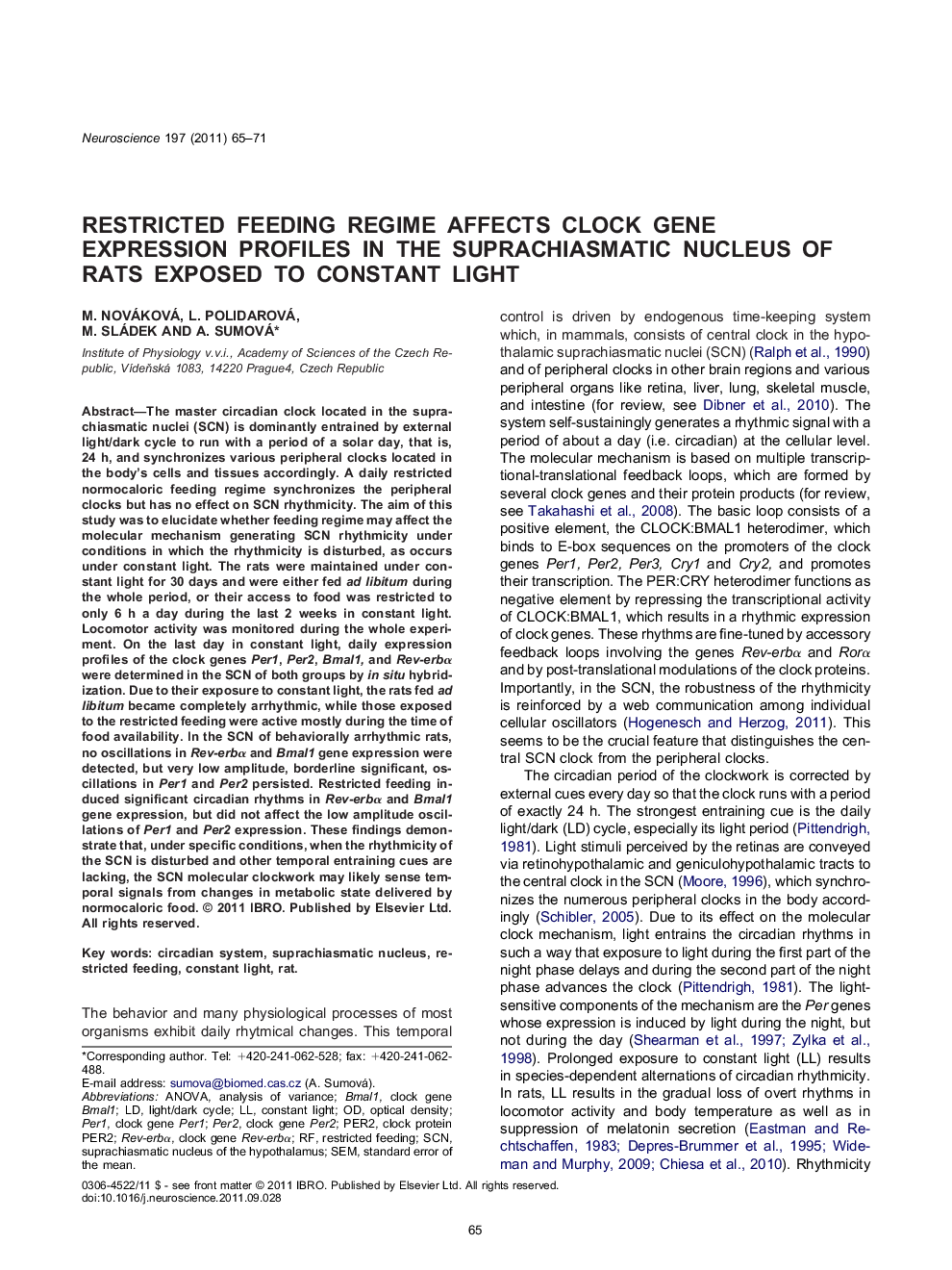| کد مقاله | کد نشریه | سال انتشار | مقاله انگلیسی | نسخه تمام متن |
|---|---|---|---|---|
| 6275925 | 1614879 | 2011 | 7 صفحه PDF | دانلود رایگان |

The master circadian clock located in the suprachiasmatic nuclei (SCN) is dominantly entrained by external light/dark cycle to run with a period of a solar day, that is, 24 h, and synchronizes various peripheral clocks located in the body's cells and tissues accordingly. A daily restricted normocaloric feeding regime synchronizes the peripheral clocks but has no effect on SCN rhythmicity. The aim of this study was to elucidate whether feeding regime may affect the molecular mechanism generating SCN rhythmicity under conditions in which the rhythmicity is disturbed, as occurs under constant light. The rats were maintained under constant light for 30 days and were either fed ad libitum during the whole period, or their access to food was restricted to only 6 h a day during the last 2 weeks in constant light. Locomotor activity was monitored during the whole experiment. On the last day in constant light, daily expression profiles of the clock genes Per1, Per2, Bmal1, and Rev-erbα were determined in the SCN of both groups by in situ hybridization. Due to their exposure to constant light, the rats fed ad libitum became completely arrhythmic, while those exposed to the restricted feeding were active mostly during the time of food availability. In the SCN of behaviorally arrhythmic rats, no oscillations in Rev-erbα and Bmal1 gene expression were detected, but very low amplitude, borderline significant, oscillations in Per1 and Per2 persisted. Restricted feeding induced significant circadian rhythms in Rev-erbα and Bmal1 gene expression, but did not affect the low amplitude oscillations of Per1 and Per2 expression. These findings demonstrate that, under specific conditions, when the rhythmicity of the SCN is disturbed and other temporal entraining cues are lacking, the SCN molecular clockwork may likely sense temporal signals from changes in metabolic state delivered by normocaloric food.
â¶Daily restricted normocaloric feeding regime has no effect on the SCN rhythmicity. â¶We examined whether the feeding regime may affect the SCN under constant light. â¶Under constant light, Per1 and Per2 mRNA exhibited low amplitude rhythms in the SCN. â¶The RF induced circadian rhythms in Rev-erbα and Bmal1 gene expression in the SCN. â¶The SCN molecular clockwork may likely sense signaling delivered by normocaloric food.
Journal: Neuroscience - Volume 197, 1 December 2011, Pages 65-71